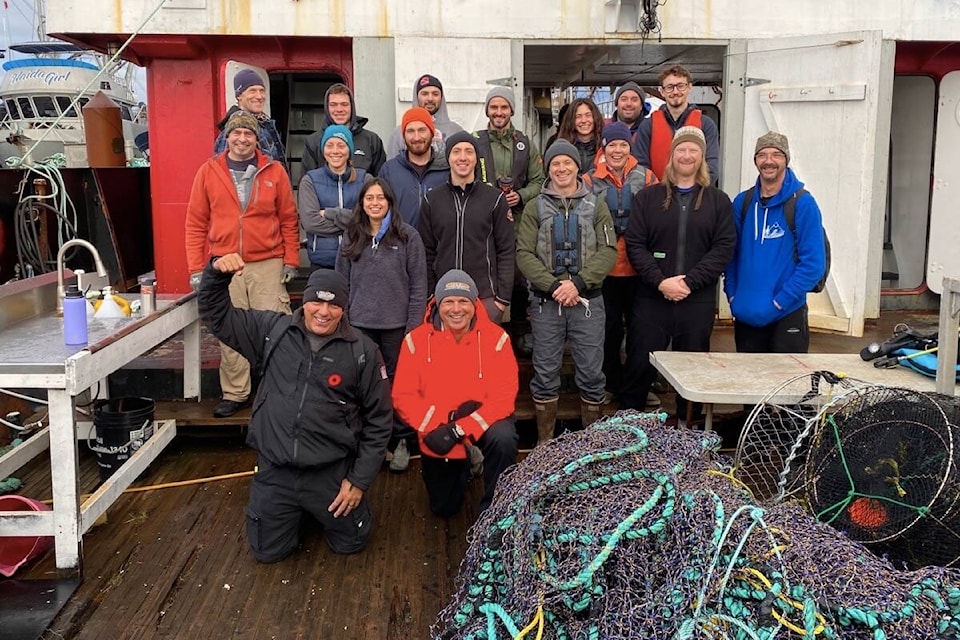After a training course held in Campbell River, divers from across Canada will be better equipped to remove lost fishing gear from sunken depths.
This course, held in November 2021, was funded through the federal Ghost Gear Program, which since 2019, has helped launch projects throughout Canada to address the issue of abandoned, lost or discarded fishing gear. This “ghost gear” is the leading cause of marine debris and can fatally entangle marine life, such as whales, and destroy sensitive habitats, such as reefs.
So far, this program has helped remove 739 tonnes of abandoned, lost, or discarded fishing gear from both Atlantic and Pacific waters, according to a Dec. 2 Department of Fisheries and Oceans press release. There were 37 projects supported in 2021, including this diver training course, which was led by instructors from Natural Resources Consultants (NRC), a Seattle-based firm, and Divesafe International, a commercial dive school in Campbell River.
“What we wanted to do was help build capacity in British Columbia for this kind of work,” said Joan Drinkwin, NRC vice-president. “It’s basically just another tool in their menu of tools that they can provide to their clients.”
NRC is a world leader in ghost gear research and removal practices. It is responsible for the successful removal of over 5,000 derelict gill nets and over 5,000 crab pots from Puget Sound, said Drinkwin.
One of Divesafe International’s motivations for being involved in the project was simply helping to get plastics “off the bottom,” said Kelly Korol, the company’s owner.
“A lot of people don’t really see the stuff that’s down there,” said Korol. “We come across lost and abandoned fishing gear, so for us, it’s a feel-good project to be able to enable other agencies to clean up the bottom.”
The course featured a first day of classroom learning, helping divers understand the impacts of lost gear, decided whether and how to remove it, and what permits are required.
Safety is a leading consideration of gear removal, said Drinkwin.
“A gill net is designed to grab and hang on to whatever it’s grabbing, and unless there’s growth on it, it’s pretty hard to see when it’s floating in the water column,” she said. “So there’s always a chance of entanglement, and that’s the biggest risk.”
The next day the divers travelled by boat for applied training in the ocean, by practicing removing traps and nets from the water.
“We went to where it’s a pretty dead, muddy bottom, and we put nets out, and had everyone go down, to provide some training on the lifting of these items using tools, winches and lift bags,” said Korol.
Lost gear is a part of any fishery, said Drinkwin.
“I’ve never met anyone who’s ever gone fishing that hasn’t lost some kind of gear,” she said. “That’s true on a commercial level as well.”
But there are ways to better manage gear to reduce losses and respond when it does happen. To achieve this, the federal government is creating a reporting system for lost gear, building disposal capacity, and developing a retrieval program, among other initiatives, she said.
“Canadian fisheries are already doing a lot of things that help to both prevent loss of fishing gear and to mitigate harm if it’s lost, but there’s always more that can be done.”
READ ALSO: Fisheries audit: little improvement over past five years despite government commitments
CPAWS: B.C. marine parks ability to protect biodiversity a “mixed bag”
sean.feagan@campbellrivermirror.com
Like us on Facebook and follow us on Twitter
